Yates Account
Join now
Create a Yates account today!
Sign up to join the Yates Garden Club for monthly e-mails packed with seasonal inspiration, tips for success & exclusive promotions.
Plus if you’re a Garden Club member you can take part in the Yates Growing Community - a blog to share successes, get advice & win prizes in fun challenges along the way!

Forgot password
Enter the email address associated with your account, and we'll email you a new password.
Rattus spp. and Mus domesticus

Rats and mice are very destructive pests; they damage property and possessions and contaminate food. Having rats and mice in the home or garden can pose a risk to human and pet physical health. Rodents are also predators of many native species. The most common rat and mouse species in NZ are the Ship Rat (Rattus rattus), Norway Rat (Rattus norvegicus) and House Mouse (Mus musculus).
How to Get Rid of Rats and Mice
To ensure rats and mice are quickly and effectively controlled around your home, it's best to take a holistic approach. It's crucial to control rats and mice via the use of baits or traps, or a combination of both. It's essential to remove all easy food and water sources. Where possible, stop rats and mice from physically entering your house, and make shelter and nesting areas less hospitable to them.
Baits
RATSAK bait products should be carefully chosen for the situation. Consider the suitability of the product based on the presence of children and pets, and the location and environment.
Top RATSAK Bait Tips:
- Always use gloves when handling baits. Never touch baits with your bare hands as this leaves human scent on the bait and discourages the rat/mouse from going near it. Most bait products are toxic, always assume they are hazardous.
- Always wash your hands after handling baits.
- Place baits in sheltered areas, where rat/mouse activity has been spotted.
- Make sure to set out enough baits. Having more baited locations increases the likelihood of the rat/mouse consuming the bait.
- Don't leave baits in a position where children or pets can get access to them. To help keep baits safe and secure, place them in a RATSAK Reusable Rodent Bait Station.
- Check on baits daily and assess which baits and how much of the bait has been consumed. If all bait has been eaten, dispense a larger volume of bait at each station. If after 2 - 3 days the bait hasn't been touched, try moving bait stations to different locations. Continue baiting for a further two weeks after the last sign of rodent activity.
- Never allow your pet to catch, play with or eat a dead mouse or rat. There's a risk of secondary poisoning, as well as a risk of parasite and disease transmission. Secondary poisoning happens when one animal (e.g. cat, dog or bird) feeds on another animal that has been poisoned (e.g. rat/mouse).
- The safety of you, your family and your pets is our priority. If you have a case of suspected poisoning through the use (or misuse) of our products in New Zealand, urgently contact our Emergency Response Service (ERS) on 0800 220 770 (24 hours).
Great RATSAK Bait Products:
- RATSAK Wax Blocks are ideal for damp areas such as kitchen, bathroom, laundry, garage, shed and under the verandah.
- RATSAK Throw Packs are ideal for hard-to-reach places such as in the roof or under the floor.
- RATSAK Disposable Bait Station as a no touch pre-baited station.
- RATSAK Reusable Rodent Bait Station to help keep baits away from children and pets
Traps
RATSAK trap products are suitable for most areas, when used safely and according to label instructions.
Top RATSAK Trap Tips:
- To make sure the trap is the right size, try to identify if it's a rat or mouse problem and choose the appropriate-sized trap.
- Traps require an attractive (non-poisonous) bait to lure rats and mice. Peanut butter or hazelnut spread is highly recommended.
- Always use gloves when handling a trap. Never touch traps with your bare hands as this leaves human scent on the trap and discourages the rat/mouse from going near it. This also protects you from parasites, bacteria and diseases once a rrodent is caught.
- Set out enough traps to do the job. Having more traps increases the likelihood of catching them.
- Correctly position the trap in a room. Place the trap perpendicular (i.e. 90 degrees) to the wall, with the baited section closest to the wall.
- Place traps in sheltered areas where rodent activity is confirmed.
- Don't leave traps in a position where children or pets can access them.
- Once a trap has caught a rodent and it's been safely disposed of, put on a fresh pair of disposable gloves, wipe the trap over with a clean, moist and soapy cloth, rinse it off, then allow to dry. Reset the trap to catch again.
Recommended RATSAK Trap Products:
- For mice, try Ratsak Pre-Baited Mouse Trap
- For rats, try Ratsak Rat Trap
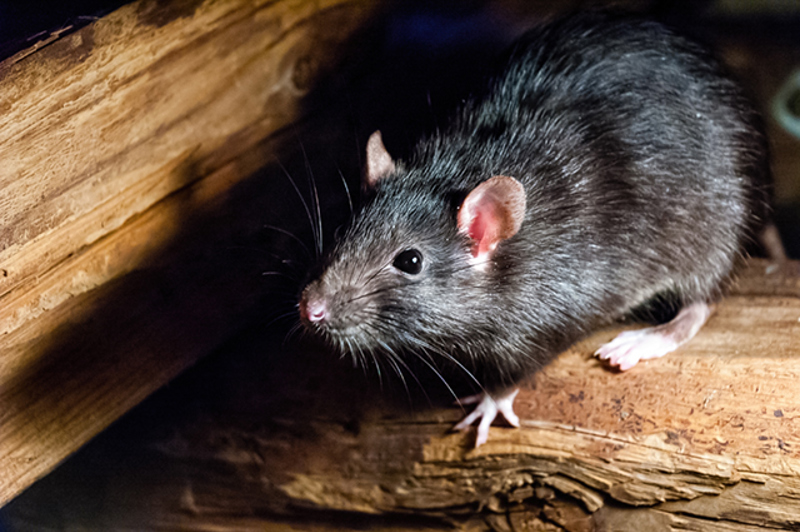
Getting rid of dead rodents
- Disposal: wear disposable gloves and protective eyewear. For traps, carefully remove the dead rat or mouse. Wrap it in newspaper, place into a plastic bag, seal well, dispose of it into household rubbish. Throw away the gloves after use. Don't bury dead rodents in the ground, always dispose of them in the rubbish bin.
- Sometimes rats and mice will die in wall cavities, hard-to-reach areas or when the rat/mouse can't be located. Generally, smells from decomposing rodents won't last longer than 2 weeks. To reduce smells in the house, we recommend plenty of air flow and use of air fresheners until the smell dissipates.
Cleaning up rodent mess
- Always use disposable gloves when cleaning up after a rodent.
- Avoid using the vacuum cleaner to clean up droppings, hairs or other mess left by rats and mice, as it can harbour parasites and diseases. It may also cause an allergic reaction. Sweep up mess using a dust pan and broom, tip it into a plastic bag, seal it well, then dispose of it into the household rubbish.
- Use a suitable disinfectant spray and wipe down hard surfaces and items.
- In cupboards, first remove all the items in the cupboard, wipe down hard surfaces, wash all items going back into the cupboard, then allow to dry before putting them back. If rodents haven't been completely controlled, place items in a clean plastic sealed container to avoid having to re-clean inside the cupboard.
- Steam clean soiled carpets and soft furnishings.
Protecting your pets
- Never use baits in an area where pets have access to baits or traps. To reduce the risk of poisoning, use baits in a bait station (RATSAK Reusable Rodent Bait Station).
- Never allow your pet to catch, play with or eat a dead mouse or rat. There's a risk of secondary poisoning, as well as a risk of parasite and disease transmission. Secondary poisoning happens when one animal (e.g. cat, dog or bird) feeds on another animal that has been poisoned (e.g. rat/mouse).
- Accidental poisoning: Depending on the active ingredient, the symptoms may show up immediately, or they may take a few days.
Symptoms of poisoning for pets:
- Seizures or muscle tremors
- Vomiting or diarrhea
- Lethargy
- Black or red poo, or blood in urine
- Bleeding gums, or other unexplained bleeding
- Excessive licking or pawing of mouth
- Excessive salivation - drooling or foaming
- Rapid or laboured breathing
- Swelling
- Red skin, ears, or eyes
Your pets safety is our priority. For information relating to potential or suspected poisoning through the use (or misuse) of our products in New Zealand, please contact our Emergency Response Service (ERS) on 0800 220 770 (24 hours).
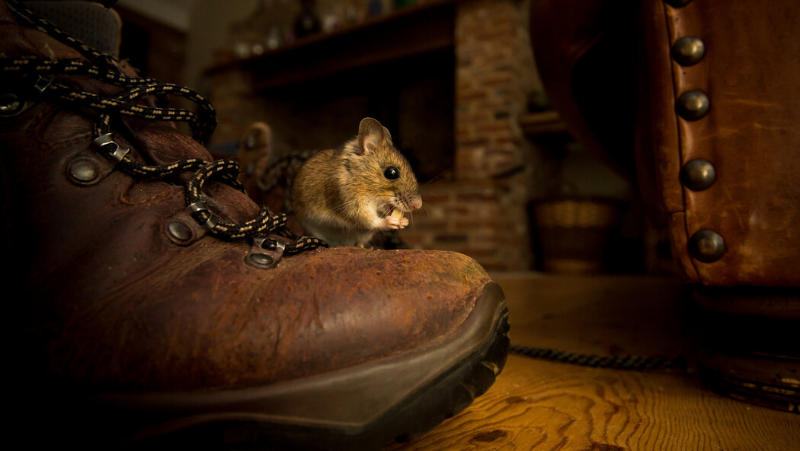
All About Rats and Mice
Rats and mice are prolific breeders and if left uncontrolled, can quickly develop into plague proportions. A high rate of reproduction, the ability to survive on a wide range of food and ability to move freely through their environments all contribute to their astounding success.
Rats and mice can carry parasites, such as fleas and ticks, and diseases caused by viral or bacterial pathogens, like leptospirosis or mycoplasma (some of which can be transmitted to humans, pets and livestock). Transmission can be caused by scratches and bites, or by coming into contact with rodent saliva, faeces or urine. Contact from rodents causes contamination and wastage of human food, pet food and bird seed.
Rats and mice can cause serious damage to property from gnawing on building materials, structures and wiring; producing stains, foul-smelling odours and mess; and feeding on crops, garden plants and gardening products.
Peak rat season is from March to June, as the weather cools. Total rodent numbers correspond with breeding conditions over summer. If there's a healthy amount of food available, a female rat will produce up to 12 litters of 20 rats each. Rats live for about 2 years, on average. One pair of rats has the potential of 15,000 descendants in a year!
NZ beech and podocarp (rimu, kahikatea, mataī and totara) forests produce heavier seed crops every two or three years, commonly known as ‘masting’ years. The extra food supply provides a bonanza for mice and rats, whose numbers often explode in response. Populations can increase significantly from October to May after a 'mast'.
Types of Rodents in New Zealand
Rats and mice are small mammals in the Rodent genera, distinguished by their perpetually growing chisel-like front teeth. They generally live in small groups.
Ship Rat, also known as Black Rat or Common Rat (Rattus rattus) is a medium sized rat. Body is slender and 350 mm to 460 mm in length, nose to tail. The coat is silky smooth and is light brown or charcoal grey on the back, with a slightly lighter coloured belly. The head is long with a rounded face, pointed nose and long whiskers. Eyes are large. Ears are prominent, large, thin and hairless. Tail is a similar colour to the upper coat, hairless, scaly and longer than the rest of the body (185mm to 255 mm). Although it's most active at night, it can be seen during the day and is unafraid of humans. They are widespread in native bush and are also attracted to buildings in urban areas. An accomplished climber, so they're able to prey on NZ native bird nests. They don't like water and swimming, and prefer to stay near to their nest when finding food.
Norway Rat, AKA Brown Rat (Rattus norvegicus) is a large sized rat. Body is stocky and 330 mm to 470 mm in length, nose to tail. The coat is coarse and is grey-brown, sometimes black, on the back and sides, with a white to grey belly. The head is long with a blunt muzzle, a straight face and long whiskers. Eyes are small. Ears are close together, set into the head, small and hairless. The tail is scaly, hairless and shorter than the rest of the body (150 mm to 215 mm). It's mostly active in the early evening and at night. They are excellent swimmers and travel long distances from the nest to find food. They're devastating to native species, being big enough to prey on ground-dwelling birds & eggs, reptiles & invertebrates. They are often found in urban areas and especially around pig sties, chicken runs, watercourses or ponds in rural areas.
House Mouse (Mus musculus) has a rounded body and is 135mm to 200mm in length, nose to tail. The coat is soft and is light-brown to black on the back, with a white to light yellowish-brown belly. The nose is pointed with long whiskers. Eyes are black, large, prominent and bulging. Ears are large, rounded and generally hairless. The tail is slender and hairless with circular rows of scales and is approximately the same length as the rest of the body (75 mm to 100 mm). Although they are good climbers, jumpers and swimmers, they prefer to stay close to their nest area. Mice are widely distributed throughout NZ (and have been caught as high as 1,300m in the Southern Alps). Mice can successfully inhabit almost any environment, especially in the presence of humans.
Kiore or Pacific Rat (Rattus exulans) was introduced into New Zealand by Māori settlers in about the 10th century. They're now much less widespread than the other two rat species, being mostly confined to the Southland region. Although Kiore do have a destructive effect on native invertebrates, they're not specifically targeted by major pest eradication programmes.
Habitats
Rats and mice prefer warm, dry, sheltered and quiet areas with access to food and water. They're generally most active during the night, although they may also be seen during the day.
Rats and mice can be spotted at any time of year, but they're especially known for entering indoor areas in autumn and winter when food becomes scarce.
Rats and mice can be found in:
- Urban areas, farmlands, bush and coastal regions.
- Outdoors in rubbish or compost bins; under piles of wood and rubbish; in trees; in dense vegetation e.g. long grass and thick shrubs; in sewers and pipes; and in animal shelters such as chicken coops, hutches and kennels.
- Indoors in any room in the house, especially kitchen, bathroom, laundry, garage and shed.
- Hiding places e.g. the roof, ceiling, inside wall cavities, under the floor and under the house.
- Under or inside house contents e.g. appliances, furniture, boxes, bathtubs, cupboards, pianos and drum kits.
Rats and mice are omnivores and feed on a wide variety of animal and plant material such as:
- Human food: including cooked and uncooked foods; decomposing food; food spills and crumbs; food waste.
- Pet food and bird seed.
- Garden crops like roots, tubers, fruits, vegetables, nuts, and grains.
- Eggs in chicken coops and bird nests.
- Snails, insects, spiders and small animals such as skinks, fish, tadpoles, frogs, young birds and small rabbits.
- Organic waste in compost and rubbish bins.
- Organic fertilisers like blood & bone.
- Fresh meat and carrion (dead animals)
Natural enemies
Birds of prey, other rodents, dogs, cats, and stoats.
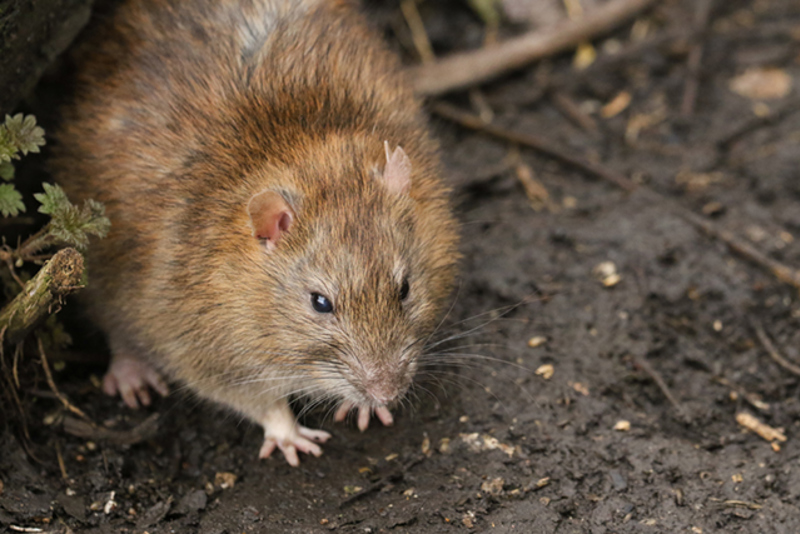
Symptoms to Look Out For
Often, you'll see a living (or dead) rodent, so that's a pretty obvious sign there's a problem. Other ways to ID rodents include:
Droppings
- Droppings are the most significant indication of a rat or mouse.
- Droppings, or faeces, are normally dark brown to black and form small piles.
- The faeces shape is long, thin and rounded and may be rice shaped or slightly curved.
- Mice droppings are usually 2 mm to 6 mm long, while rat droppings are generally 9 mm to 19 mm long.
- Fresh droppings are soft and glisten due to high moisture content. Older droppings are dry, hard and dull in appearance.
- Droppings can be found inside cupboards, on benchtops, near the edges of the room, under appliances, in the oven and in most other areas rats and mice are known to inhabit (see ‘Habitat’ above).
- Droppings aren't found near rodent nesting areas.
Urine stains
- Rats and mice urinate as a chemical communication method to mark territories, attract mates, identify one another and their status, and for spatial awareness.
- Rats and mice urinate on each other, food, objects, walls, floors and on other surfaces.
- If infestations are left unattended, urine spots can develop into 'urine pillars' made up of urine mixed with dust, hair and fine-particle debris.
Hairs
- Hairs lost through grooming are covered in rodent saliva.
- Hairs are shed during moulting season several times a year, resulting in thousands of shed hairs.
Nests
- Nests are often made from shredded paper, insulation, leaves, rubbish and other debris.
- Generally nests are found inside the roof, under the floor, in the shed, garage, chicken coop or garden.
- Brown Rats prefer to live in burrows in the ground. Often seen on the outside of buildings and other structures; as well as underneath piles of wood and other debris. Entry holes are approximately 75 mm in diameter and may have piles of earth at the entrance.
- Indoors, Black Rats prefer to live in the roof, ceiling, walls and in other protected areas, while outdoors they live in trees and dense vegetation.
Odour
- Odours are mostly caused by urine and faeces.
- Rodents can also produce a musky animal odour.
- The foetid odour produced from the decomposition of a dead rodent will last for about 2 weeks.
- Odours may be more concentrated inside cupboards and other enclosed spaces.
Gnawing
- Rats/mice have perpetually growing teeth so they wear down their teeth by gnawing on hard objects and surfaces such as timber, wiring and pipes.
- Items which can be damaged by gnawing include furniture, cupboards, posts, window and door frames and building materials.
- Chewing of food packaging, often along the sides and in corners of plastic bags and cardboard boxes filled with food.
- Chewing to get into an area e.g. through plasterboard walls.
- Gnawing and feeding can damage trees, shrubs and garden crops.
Tracks, footprints and tail marks
- Rats and mice are creatures of habit and tend to stick to the same routes.
- Paw prints and wavy lines (made by dragging the tail) are found in dusty areas, or made after getting into foodstuffs like flour.
- Indoors, paw prints, tail marks and tracks are often found along the base of walls and behind furniture.
- In outdoor areas, well-defined runway tracks can be found in dense vegetation.
- To ID paw prints - rats and mice have four toes on their front paws and five toes on their back paws. The front paws are smaller than the hind pair. The length of the hind pair paws, from heel to longest toe) in adult mice are about 10-20 mm, whereas rats are about 25 - 40 mm.
Burrowing
- Burrows can be made in the ground, sometimes developing into extensive tunnel systems.
- Rats and mice can dig under structures, walls, fences, compost bins and plants.
- Depending on the substrate, rats have been known to dig as deep as 1.8 metres.
Rub marks
- Rub marks are yellowy, sometimes dark smears, often containing hairs.
- The marks are primarily caused by the secretion of a yellow, greasy substance called lanolin, produced from their oil glands. Lanolin lubrication allows rats/mice to squeeze through tiny holes. Lanolin mixed with dirt causes rub marks to appear as brown oily smears.
- Marks can be seen on furniture, upright roof timbers, skirting boards, on walls, around holes in the walls and other entry-points.
Sounds
- Sounds are generally heard at night: squeaking, scurrying, scratching, climbing, burrowing and creating nests.
- Mostly noise is heard in the roof, underfloor and in wall cavities.
- Rats and mice have perpetually growing teeth and to help wear their teeth down, they can be heard grinding timber and pipes.
- Sounds made by birds nesting in the roof and gutters are usually accompanied by chirping.
Behaviour
- Hoarding or movement of food back to the nest. At feeding sites there may also be an accumulation of food packaging, bones, seed husks and other debris. Feeding sites can be found in walls, ceilings, roofs, dense vegetation, and under the house, in piles of wood and other debris.
- Rats are generally cautious of new things in their environment, while mice are generally more curious.
- If threatened, rats may bite. It is safest not to approach a living or dying rat/mouse.
- Rats and mice are agile climbers and can climb vertical walls, wiring, pipes and other structures; they're also great jumpers and swimmers.
- Rats and mice have poor vision but excellent smell, hearing and taste.
Signs of rats and mice are sometimes confused with birds, possums, and other animals. Before setting out any baits, traps or repellents, make certain the cause has been properly identified as rodents.
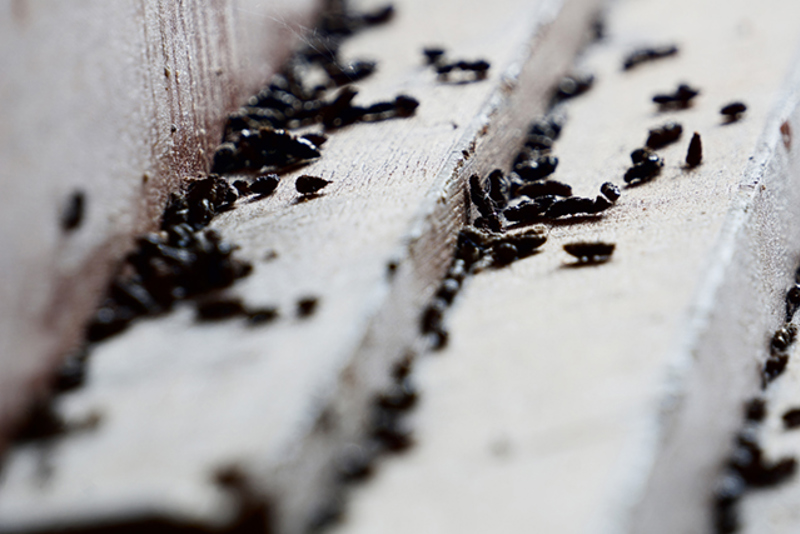
Rodent Prevention Techniques
Monitor regularly, checking for signs of rats and mice (see ‘What to Look Out For’ above). Making your house and property inhospitable to rodents really reduces the likelihood of future infestations and helps to get on top of a current infestation.
Remove entry points:
- Repair holes, cracks and gaps in walls, skirting boards, window frames and door frames.
- Seal any breaks or openings in the house with wire mesh or copper wool.
- Cover any open pipes or drains with grates.
- Ensure garage doors seal properly.
- Repair doors and windows so they close properly.
- Keep windows and doors closed.
- If possible, cover vents with a fine wire mesh.
- For aviaries, bird cages and chicken coops, try installing heavy grade flyscreen or fine wire mesh.
Remove shelter sources:
- Remove weeds.
- Prune dense vegetation, e.g. long grasses and dense shrubs.
- Regularly mow the lawn.
- Keep house, shed and garden free of clutter to reduce hiding places.
- Remove any materials that can be used for nesting, like roof insulation, fabric and paper.
- Remove any building materials, piles of timber or debris on the ground.
Remove food sources:
- Keep all food in plastic sealed containers or in the fridge.
- After using the kitchen wipe, down benches and pick up any dropped food and crumbs.
- Clean food appliances well after use, e.g. toaster or sandwich press.
- Regularly clean underneath appliances, such as the fridge, oven and dishwasher.
- Clean any spilt food on the outside of containers, like sauce bottles and jars.
- Store toothbrushes in sealed containers.
- Keep night-time drinking water in sealed bottles.
- Ensure rubbish bins are well-maintained, free of holes and lids are firmly secured.
- Dispose of rubbish regularly, especially before going to bed at night or leaving the house during the day.
- Rinse food waste residues out of recyclable packaging.
- Thoroughly clean outdoor barbeques after use. Keep collected oil and grease in drip pans/trays in a plastic sealed container until it's ready for disposal.
- For garden crops like capsicums and tomatoes, try securing bird netting firmly around garden beds.
- For fruit trees, ensure fruit that has fallen from the tree is picked up promptly; plant fruit trees in a position where rats and mice can't hop from one tree to the other; try crown-lifting low-hanging fruit bearing branches; and install a slippery tree guard along the trunk of the tree to deter rats and mice from climbing up.
- Store organic fertilisers, e.g. Blood and Bone, in plastic sealed containers.
- Make sure compost bins are maintained properly and located away from the house. If a rodent problem is especially bad, pause composting until they've been properly controlled.
- Avoid leaving pet food and bird seed out for extended periods of time.
Remove water sources:
- Repair leaky taps and pipes.
- Eliminate any standing water like bird baths.
- Wipe up water on benches, in sinks and on the floor, especially before going to bed at night or leaving the house during the day.
- Ensure rain water tank openings are fitted with a firmly secured mesh. See tank manufacturer for further advice.
- Keep the lid of the toilet closed.
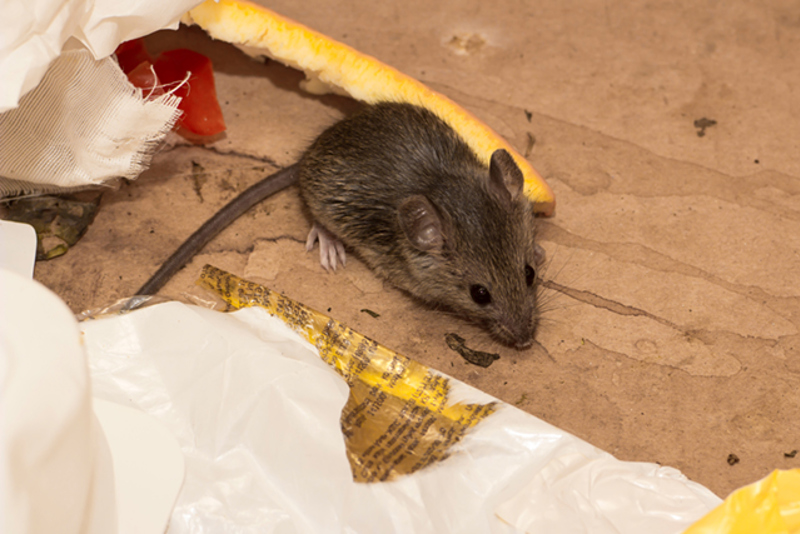
What plants are impacted by Rats and Mice
Rats and mice cause damage to plants by feeding, gnawing and burrowing. They can damage seedlings, roots, tubers, fruits, vegetables, nuts and grains. Produce may be picked up and taken away, or show bite marks, gnaw marks or small chewed holes - the whole fruit or vegetable is unlikely to be eaten. All fruits and vegetables are vulnerable to attack; thin-skinned and sweet crops are rodent favourites.
Examples of targeted fruits:
- Apple and pear
- Avocado
- Banana
- Berries
- Citrus, especially sweet flavoured fruits
- Fig
- Grape
- Stone fruits such as peaches and nectarines
Examples of at-risk vegetables:
- Broccoli
- Capsicum
- Carrots
- Chilli
- Corn
- Cucumber
- Leafy greens
- Legumes such as Snow Pea, Pea and Bean
- Pumpkin
- Sweet potato
- Tomato
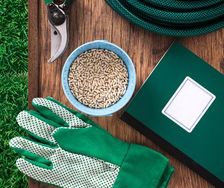

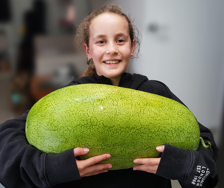













Share
Share this article on social media